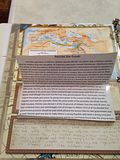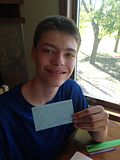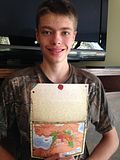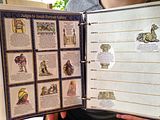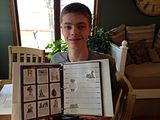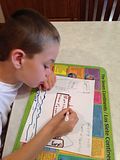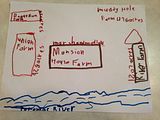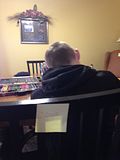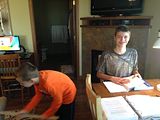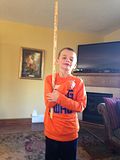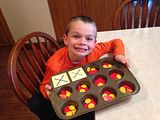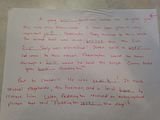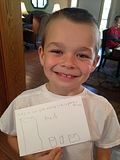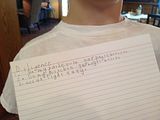Resurrection to Reformation:
This week in history Riley read about the Hundred Years' War between France and England. He couldn't believe that Henry II was King of England, Duke of Normandy, and Lord of Brittany in France - all at the same time!

During this time, the Black Death spread through Europe, and the devastation this caused was made clear to Riley by his History Project especially. To show how quickly the Black Death spread, Riley labeled 10 bags labeled with various cities in Europe with counters in them, some marked to show how much the Black Death had spread there, and others unmarked to show the proportion it had not. He rolled the dice while referencing his map of cities, drawing out the number of counters rolled at each city. If he drew a counter with a mark on it, he was exposed to the plague at that city. Going on to the next city, he didn't roll the dice then, as he'd already been exposed previously, but he marked one of the unmarked counters in that city's bag to show he had moved on to that city and exposed other people to the plague there. He traveled like this 3 cities past where he first was exposed himself to the plague, and then at that city he died. He did a land route and a sea route this way, and it showed him clearly how traveling people exposed to the Black Death often kept traveling for a bit before realizing they had contracted the disease, inadvertently exposing more people to it, causing it to spread quickly in cities along land and sea routes. He made it much further on land than at sea. He thoroughly enjoyed this history project, and I doubt he'll ever forget how the Black Death spread so quickly and took so many lives...

Riley's Map Trek maps continue to be a great tie-in to what he is reading in "Story of the Middle Ages" and "Famous Men of the Middle Ages." The directions are so clear, and the maps turn out so nicely. They often act as further references for geography, atlas, and history activities, so they are put to good use!

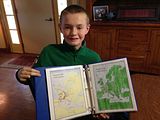
In 'Medieval History Based Writing Lessons," Riley used a fused key word outline, meshing his notes from 2 different resources, to write his "Battle of Hastings" piece. The rough draft rubric has helped him utilize all of the mini-lesson skills he has been taught this far, like using -ly words, vivid vocabulary, beginning sentences with the who/what clause, varying sentence lengths, etc. He marks the use of these writing helps in the margin, and I have him high-light those so they stand out to me when I am correcting them. He then typed his piece. Often in typing there are still errors to fix, and after printing it, I edit it directly on that paper, and have him fix those errors one last time and reprint. This is teaching the writing process so well, and it is amazing the amount of work that goes into a relatively short piece by its final edit and print!

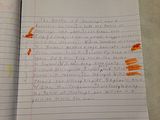
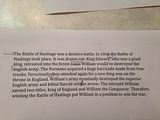
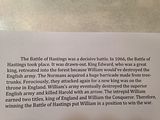
For DITHOR, Riley and Emmett made their Godly character trait cards together. Each had different areas they wanted to focus on improving. I love the connections between Godly character traits within Bible characters, book characters, and then ourselves. This pattern of studying Godly character traits is so effective, and it has the side benefit of helping them to analyze their book characters' decisions in light of the Bible - a great literary and Biblical connection.
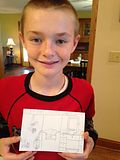

In Christ,
Julie
